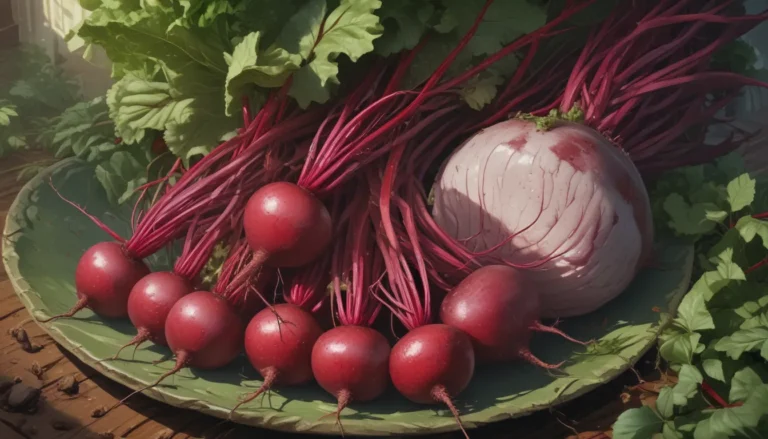Nasturtiums: A Comprehensive Guide to Disease Prevention and Treatment

When it comes to gardening, there are few plants as intriguing and versatile as the nasturtium. With their stunning flowers and spicy flavor, these plants add a unique touch to any garden. However, like any plant, nasturtiums are not immune to disease. In this in-depth guide, we will explore everything you need to know about preventing and treating common nasturtium diseases.
Why Nasturtiums Are Special
I vividly remember my first encounter with a nasturtium. It was a summer day, and I stumbled upon a Tropaeolum majus while doing my rounds at a botanical garden. The stunning orange flowers and spicy taste left me entranced. Since then, my love for nasturtiums has only grown.
If you share my passion for nasturtiums, you know how important it is to keep them healthy. While nasturtiums are relatively resilient, they can still fall victim to diseases. Let’s dive into the basics of disease prevention and explore some common ailments that affect these plants.
What You’ll Learn
-
Tips for Preventing Disease
- Choose Pathogen-Free Plants
- Sterilize and Sharpen Garden Implements
- Space Properly and Prune Regularly
- Place in Full Sun and Irrigate Properly
- Dispose of Dead Plant Tissues
-
Common Nasturtium Diseases
- Aster Yellows
- Bacterial Leaf Spot
- Botrytis Blight
- Clubroot
- Impatiens Necrotic Spot Virus
- Powdery Mildew
- Wilt
Tips for Preventing Disease
Prevention is key when it comes to protecting your nasturtiums from disease. Here are some essential tips to keep your plants healthy:
Choose Pathogen-Free Plants
Whether you’re using seeds or transplants, ensure that your plants are free of disease. Talk to your sellers and vendors to ensure the plants are healthy. If using your own seeds, make sure they come from disease-free plants.
Sterilize and Sharpen Garden Implements
Regularly clean and sharpen your gardening tools to prevent the spread of disease. Sanitize your tools with rubbing alcohol and keep the edges sharp to avoid creating large wounds on plants.
Space Properly and Prune Regularly
Give your nasturtiums room to breathe by spacing them properly. Regular pruning helps maintain airflow within the plants and keeps them healthy.
Place in Full Sun and Irrigate Properly
Nasturtiums thrive in full sun, so ensure they receive adequate sunlight daily. Avoid overwatering, as excessive moisture can lead to disease.
Dispose of Dead Plant Tissues
Remove dead plant tissues promptly to prevent the spread of disease. Dispose of the tissues properly to avoid contaminating other plants.
Common Nasturtium Diseases
While nasturtiums are relatively disease-resistant, they are still susceptible to a few common ailments. Here are some diseases to watch out for:
Aster Yellows
Caused by phytoplasma, aster yellows can lead to leaf chlorosis and stunted growth. Infected leafhopper insects spread the disease, particularly in wet and cool conditions. While there is no cure for aster yellows, keeping infected plants isolated can help prevent the spread.
Bacterial Leaf Spot
Bacterial leaf spot causes brown or black spots on the leaves and can be spread through contaminated tools. Proper cleaning and increased airflow can help prevent this disease.
Botrytis Blight
Botrytis blight, caused by fungi, can affect the buds and flowers of nasturtiums. Avoid overhead watering and sanitize your planting areas to prevent this disease.
Clubroot
Clubroot causes stunting and wilting in nasturtiums, and infected roots can resemble clubs. Planting disease-free plants and avoiding infected soil can help prevent this disease.
Impatiens Necrotic Spot Virus
This virus causes a variety of symptoms in nasturtiums, including poor flowering and wilting. Infected plants should be removed promptly to prevent the spread of the disease.
Powdery Mildew
Powdery mildew, caused by a fungus, can weaken nasturtiums and affect their performance. Growing plants in well-ventilated areas and removing infected plants can help prevent the spread of this disease.
Wilt
Wilt, caused by bacteria, can lead to yellowing and eventual death of nasturtiums. Avoid overhead irrigation and plant rotation to prevent this disease.
Conclusion
Nasturtiums are unique and delightful plants that deserve proper care and attention. By following these tips for disease prevention and staying vigilant against common ailments, you can keep your nasturtiums healthy and thriving. Remember, a little prevention can go a long way in maintaining the beauty of your garden.
If you have any questions or insights about nasturtium diseases, feel free to share them in the comments below. Your feedback is always appreciated! For more information on growing and caring for nasturtiums, check out our other guides. Happy gardening!





